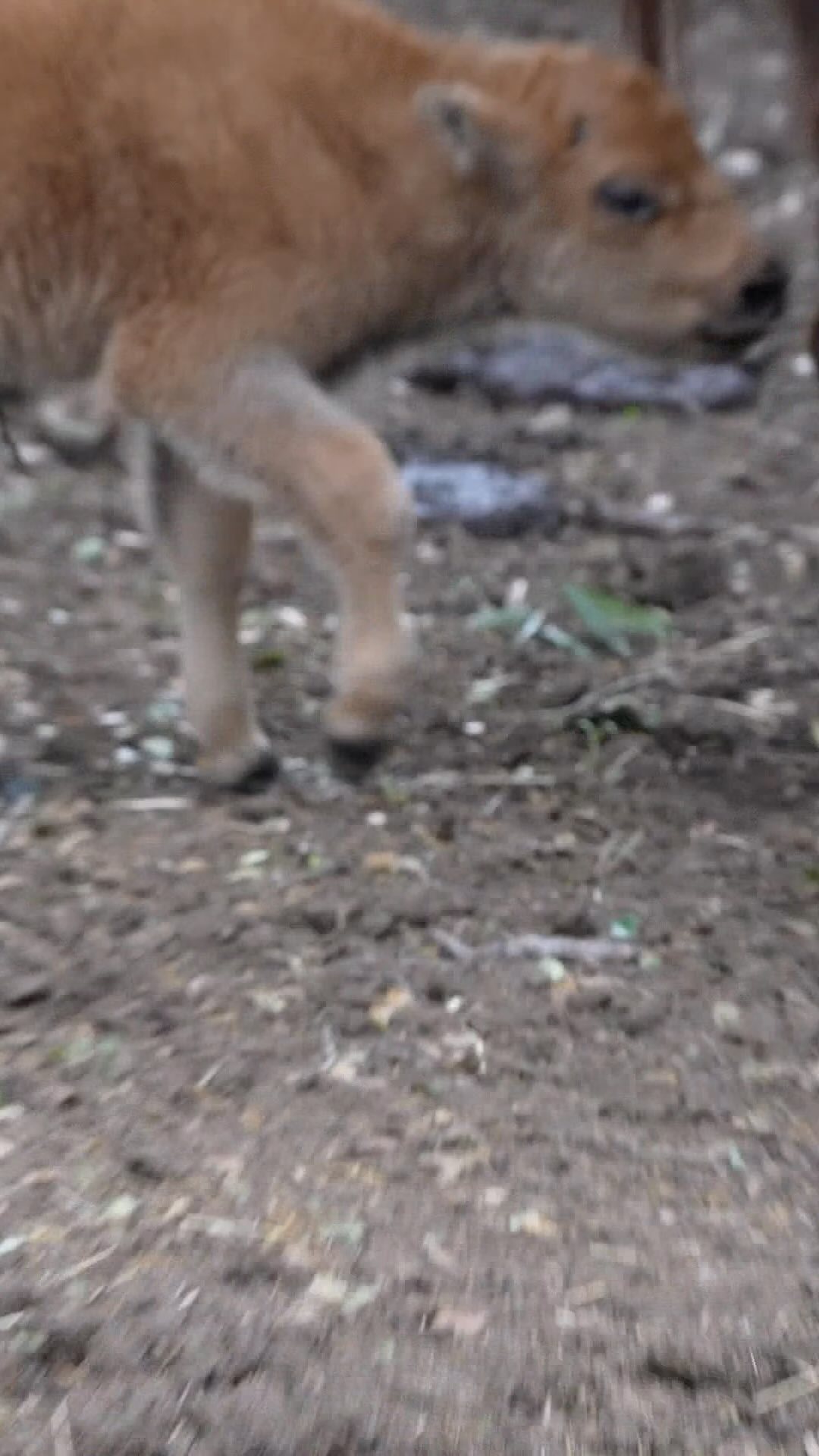- Introduction of Fresh Fuzzies and the joy of new life in the bison herd.
- The significance of the Iinnii Initiative for bison population recovery.
- Insights into the natural history and zoology of bison.
- The challenges and successes of managing a bison herd in a zoo setting.
- The role of educational facilities like the Bison Overlook at California Trail in wildlife conservation.
The arrival of new life has always been a cause for celebration, and the recent addition of three baby bison, or “red dogs,” to the bison herd is no exception. This momentous event is a step forward in wildlife conservation efforts, particularly given these majestic animals’ endangered status.
Affectionately named for their cinnamon-colored fur, which changes to a darker brown as they mature, these young bison represent hope for the future of their species. The Iinnii Initiative, an ambitious conservation project, involves restoring bison populations across their historical range, focusing on reviving the ecology and culture of Northern Plains tribes. These baby bison are poised to play a pivotal role in this important venture as they grow.
Understanding bison’s natural history is crucial to appreciating the significance of these births. Bison, or Bison bison, once roamed North America in massive herds, shaping the grasslands with their grazing patterns and serving as an essential resource for indigenous peoples. However, in the 19th century, this iconic species was brought to the brink of extinction due to overhunting and habitat loss.
Zoo management plays a vital role in conserving species like the bison. Zoos provide a sanctuary for breeding and research, contributing to the species’ genetic diversity and offering a direct connection for the public to engage with wildlife. Managing a bison herd in captivity presents unique challenges, from ensuring proper nutrition and habitat to addressing veterinary care needs and facilitating natural behaviors.
While caring for these animals, zookeepers must balance human intervention and allow natural processes to occur. This is particularly important when it comes to nurturing young bison, as their mothers are instinctively protective and capable. Human contact is minimized to ensure the calves bond with their herd, not their keepers, which is vital for reintegration into the wild.
The Bison Overlook at California Trail provides visitors with an up-close experience with these creatures, fostering a deeper understanding and appreciation for bison. Educational tools and programs at such facilities are instrumental in wildlife conservation efforts, for they empower visitors with knowledge and inspire them to advocate for these species and their habitats.
Participation in conservation initiatives like the Iinnii Initiative demonstrates the zoo’s commitment to reversing the decline of the bison population and highlights the interconnectedness of captive breeding programs and in situ conservation efforts. These initiatives are a testament to the positive outcomes that can emerge from dedicated stewardship and the collaboration of conservationists, indigenous groups, and the public.
In caring for the bison herd and their new calves, zoos exemplify the multifaceted approach needed to protect endangered species. This includes habitat restoration, political advocacy, ecological research, and public education. With the birth of each new bison, conservationists are reminded of the resilience of nature and the potential for recovery, even for species that once faced near-inevitable extinction.
The presence of the three fresh fuzzies within the herd is not just a cute novelty but a cornerstone for future generations of bison. As visitors gaze upon them from the gondola or Bison Overlook, they witness the enduring legacy of a species that has been an integral part of the American landscape, culture, and spirit. These red dogs, grazing under the watchful eyes of their mothers amid the expanses of grassland, are a powerful symbol of hope and the enduring efforts to preserve our natural heritage.
Every sighting of these young bison strengthens the bond between humans and the natural world, reminding us of our responsibility to protect it. These efforts are vital for our planet’s ecological balance and species’ survival like the bison. Through education, conservation action, and responsible stewardship, we can all be a part of securing a thriving future for the next generations of these remarkable animals.
*****
Source Description
Fresh fuzzies! We are proud to report our bison herd has welcomed three new baby bison over the past week.
These “red dogs” (named for their light colored fur, which eventually darkens as they get older) will eventually help replenish the bison population in Montana as part of the @iinnii_initiative.
Keep an eye out for these light colored little ones when you’re on the gondola or from the Bison Overlook at California Trail 🦬


